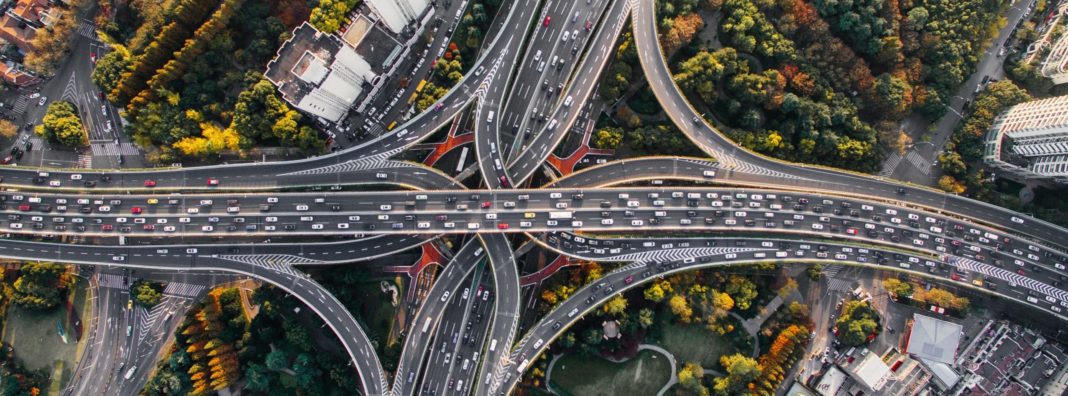
The Biden administration’s 30×30 initiative is a bold project with major implications for public and private conservation management. So far, the details of how it will be implemented are unclear. However, the Biden administration’s America the Beautiful report outlines key principles they will follow as they work to conserve 30% of land and water by 2030.
Exactly what types of land will count toward the 30% goal remains unclear, although the report does acknowledge the need to recognize private conservation efforts. Where, and what types of land are included in the 30% target will impact how likely the initiative is to achieve its goals, including biodiversity preservation and equitable access to the outdoors. Urban conservation will be key to achieving both of these goals.
Preserving and promoting biodiversity, which is in decline worldwide, is a major challenge of 21st-century conservation. Biodiversity — the richness of different plant and animal species in a certain area — is an important indicator of ecosystem health. The average abundance of native species in land-based habitats has decreased by 20% since 1900 and the United Nations has warned that 33% of marine fish stocks are being harvested at unsustainable levels. Biodiversity loss impacts not just plants and animals, but human health and our ability to use land for economic, recreational, and other purposes.
Increasing Americans’ access to the outdoors and its accompanying health benefits is another key goal of the 30×30 initiative. It’s also in line with another Biden administration commitment, outlined in the January 27th executive order on the climate crisis, to provide 40% of the benefits of its policies to disadvantaged communities. A report from the non-profit Trust for the Public Land shows that parks in majority non-white neighborhoods serve nearly five times as many people and are half as large as parks in majority-white neighborhoods. Roughly 100 million Americans don’t have a park within a 10-minute walk from their home.
Rural areas are easier to protect because they have less human interference, and thus often have more secure biodiversity. But because human infrastructure causes habitat and biodiversity loss, the most at risk areas are often located near cities. Fortunately for the Biden administration, conserving land in urban areas helps achieve both goals — biodiversity preservation and improved access to nature — even if it’s not what most people first think of when they picture conservation.
Broadening our definition of nature
The US has long been a world leader in conservation, particularly large-scale landscape protection. Roughly 12% of land in the US is protected. Currently, the most often prioritized areas for conservation are in geographic areas that already have robust biodiversity, like the more rural western states. But that means the most at-risk regions are often left unprotected. That’s because it is easier to set aside rural patches of land for conservation than to preserve undeveloped land in and near cities.
However, the highest priority areas for conserving biodiversity — those with valuable biodiversity and greatest risk of losing it — are in the Southeast and near growing cities. Habitat loss, often caused by human activities, is the biggest driver of biodiversity loss. Fortunately, the presence of humans doesn’t mean that species are doomed to dwindle. A study in Nature Communications found that protected lands help maintain biodiversity, even in some areas dominated by human use.
Our conception of nature also influences what we consider worth protecting. When we think of nature that has conservation value, we often think of national parks like Yellowstone or Yosemite, or endangered animals, like the Florida panther, or the red wolf. Knowing that human infrastructure is destructive to wildlife increases the sense of urgency to preserve what “pristine” wilderness remains. That’s part of the reason that 39 of the 63 national parks in the US are in the less densely populated western states. But that has left species near large cities more at risk. The map below shows the biodiverse areas that are most at risk of losing species. Most are near large or growing population centers.
Highest Priority Areas for Biodiversity Conservation
Source: PNAS
Contrary to how we often imagine wildlife, large portions of many species’ habitats are in urban areas. Twenty-two percent of endangered plants in the US are primarily found in cities and suburbs. The threatened Utah desert tortoise has habitat that overlaps with rapidly growing cities. Survey data from St. George, Utah, which has relatively high population growth of nearly 3% per year, shows that local residents had very little knowledge that the tortoise lived nearby. They were also unaware that the tortoise was classified as “threatened” and only 29% had even heard of the Endangered Species Act.
When we only consider pristine, untouched landscapes as real nature, we overlook important conservation opportunities close to home. If we view the 30×30 initiative as an opportunity to emphasize the conservation of nature found in city parks, for example, we are protecting nature that experiences the most direct human contact. In addition to protecting the species that we interact with most, we are making nature more accessible to people in urban areas. Features that make cities more livable, like parks and nature paths, can also improve habitat for wildlife if managed for that purpose.
Many species, like songbirds, have small, fragmented habitats, and can be successfully protected by preserving and appropriately managing small patches of land. The National Park Service explains that one way to hedge against the habitat loss of bird species is by strategically planting trees and plants in urban areas that will benefit the birds. Simply planting trees that increase their food supply, like fruit-bearing trees or trees known to house caterpillars, will improve their habitat. Just as more conservation attention goes to large-scale landscapes, well-known species like bears and wolves receive more funding than smaller, less impressive species. For example, fifty percent of endangered species in the U.S. are plants, but they receive the least funding. Urban green spaces can provide important habitat for endangered species that might otherwise be left on the sidelines of conservation efforts.
As we broaden our definition of nature to include areas in cities and not just the large, rural landscapes already being conserved, we can move closer to the intent behind the 30×30 initiative. Some conservation tools that work in rural areas will also work in cities, but additional approaches that fit the unique needs of urban conservation should also be embraced.
Repurposing conservation tools for urban use
Urban preservation has unique challenges. The price of conserving land in cities is higher than in rural areas because there are more people interested in using it. However, there are benefits to preserving natural areas in cities, and not just for wildlife. Green space in cities often improves neighboring property values and access to parks is linked to mental and physical health benefits. Many city officials recognize that preserving natural areas has important benefits and have developed tools to conserve land despite economic pressure to develop them.
Gasworks Park in Seattle is an example of an area once dominated by human use that has been repurposed to preserve nature while also providing leisure for humans. The park sits on a former gas plant site and is a popular spot for both locals and tourists. The land was converted into a park using money from the Land and Water Conservation Fund, a federal grant program that uses oil and gas drilling revenues to preserve natural areas.
The fund has provided more than 40,000 grants to state and local governments over the past 40 years. Government officials are already familiar with LWCF grants and can use the funds to improve biodiversity by specifically managing public parks for the benefit of species. That grant money, spread across cities all over the nation, can become an effective tool to achieve 30×30 if those green spaces are managed to protect biodiversity. Because the funds are appropriated for public parks and outdoor recreation, they simultaneously provide increased access to nature for citizens.
Other small-scale conservation tools are uniquely suited to urban areas. Wildlife corridors are wildlife-friendly passages that divert animals away from high-traffic human areas like roadways. Many roads cut across important migration paths for animals, leading to deadly crashes. In Utah, the Department of Transportation recorded 106 collisions between vehicles and animals in one section of Interstate 80 during a two-year period. The crashes killed 98 deer, three moose, two raccoons, two elk, and one cougar.
The state recently constructed a wildlife-friendly overpass to divert animals away from traffic. The wildlife corridor was quickly adopted by a diverse group of wildlife. Data on whether the corridor has reduced collisions will be compiled later this year, after it has been operating for three years. If wildlife corridors turn out to be beneficial to the wildlife near interstates, they could become another important tool for managing the interactions between humans and wildlife so they are not harmful to either group. More tools like this are needed as the wildland-urban interface continues to grow.
A third tool that helps protect nature near human activity is conservation easements. They are frequently-used in rural areas and can also be used to preserve natural spaces in cities. Conservation easements are agreements between private landowners and the government in which the landowner maintains many property rights but agrees to avoid certain actions (especially development) that would diminish the conservation value of the land. Easements apply even through ownership changes, so they are a powerful long-term tool to conserve land in areas that are already used by humans. They result in a win-win situation for both the government and private landowners who value conservation — the government is able to protect land at a lower cost than if they were to buy the land, and landowners get to maintain their property rights while protecting the environment.
For example, Emerald Park in San Francisco is a public access park owned by a real estate development company that built neighboring apartments. The original contract authorizing the apartment construction included a requirement that the developer set aside one acre of land for sale to the city, which would then construct a public park. However, the retail value of the land was so high that the city was never able to secure adequate funds to purchase it. Instead, the city entered into a conservation easement with the developer. The developer agreed to relinquish its development rights and maintain the public access park in its pristine condition forever.
Conservation easements, public parks, and wildlife corridors show that there are many more ways to conserve land than by creating landscape-scale national parks and wilderness areas. “Pristine” nature is not the only nature worth conserving, and 30×30 provides an opportunity for the government to formally acknowledge that. Doing so would benefit both the environment and the people who live near important urban centers of biodiversity.


